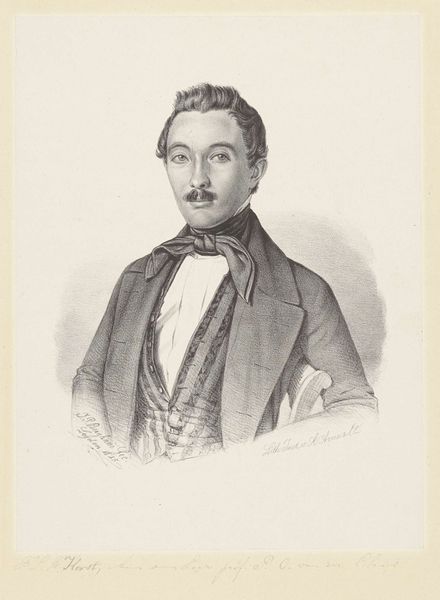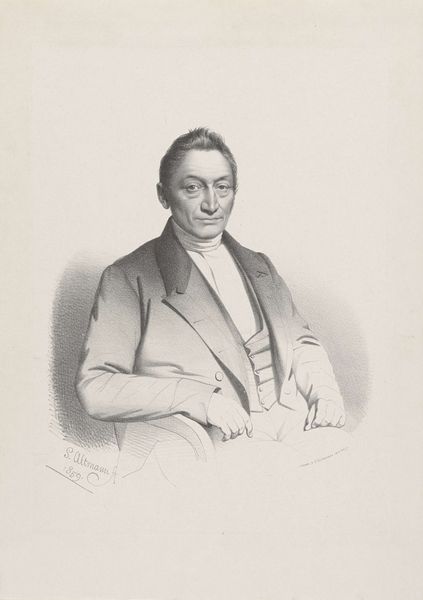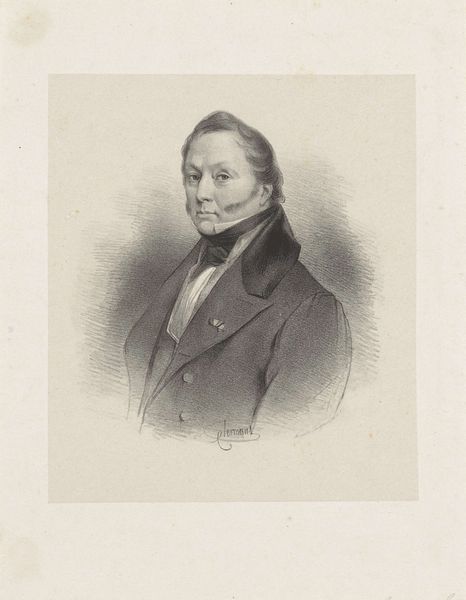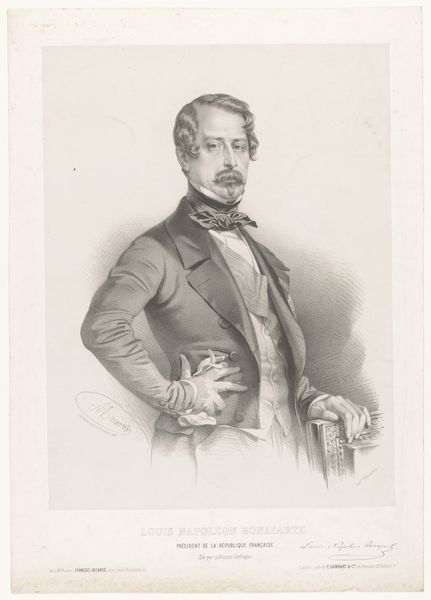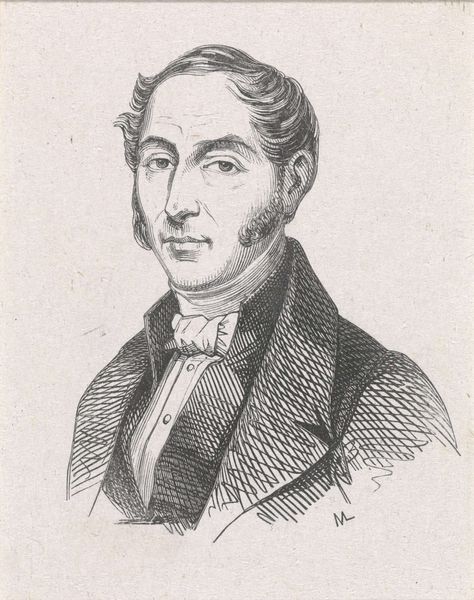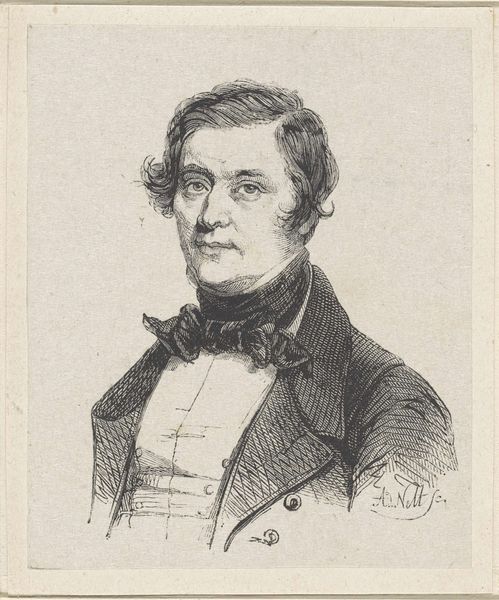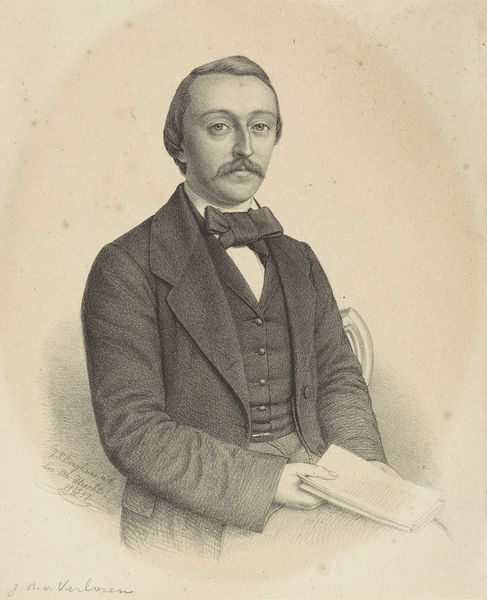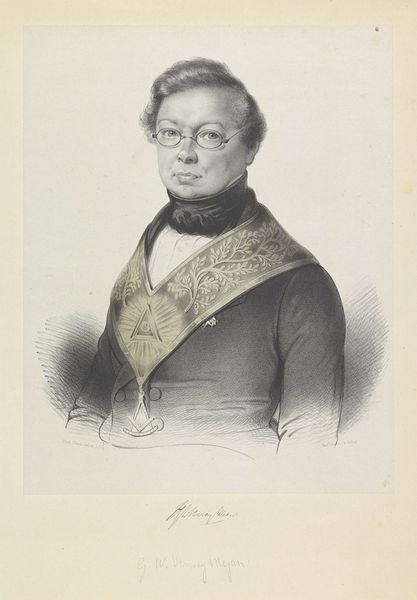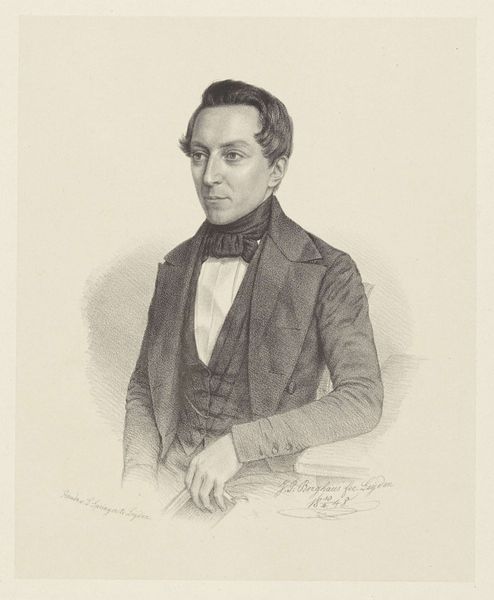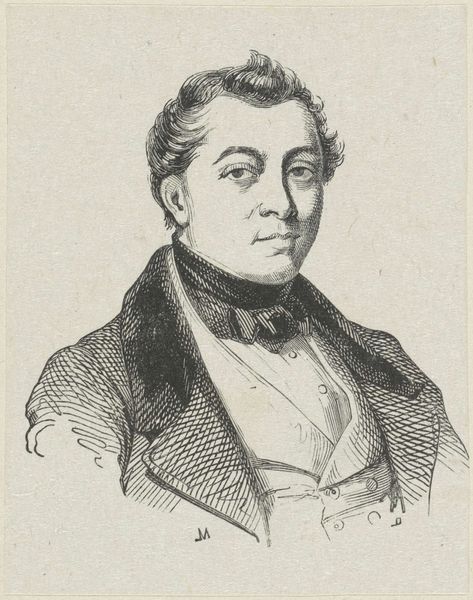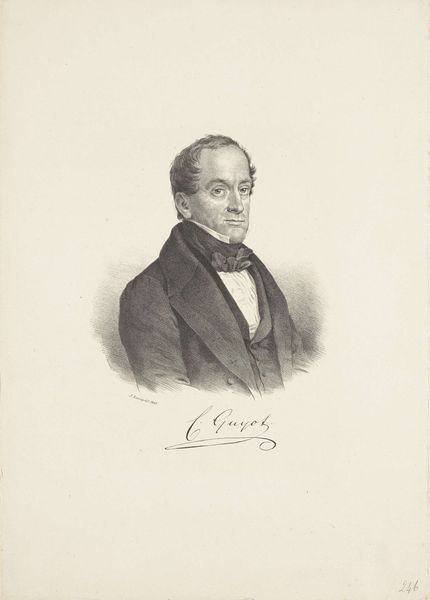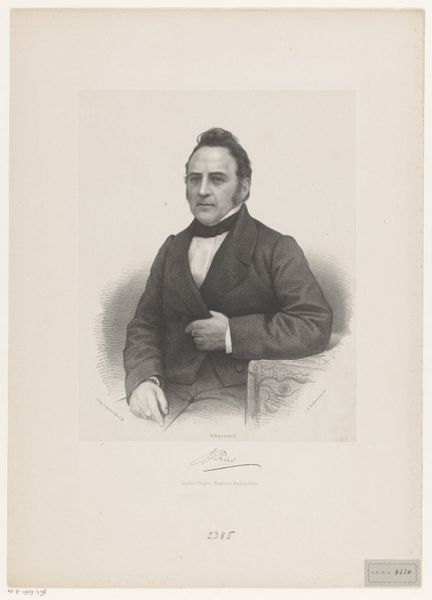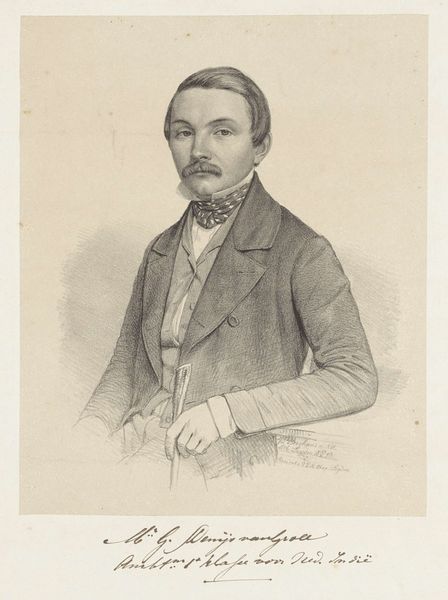
drawing, pencil
#
portrait
#
drawing
#
romanticism
#
pencil
#
realism
Copyright: Public domain
Editor: This is a pencil drawing from 1846, titled "Portret Aleksandra Fredry," created by Henryk Rodakowski. It has a formal, almost stately feel. What stands out to you when you look at this portrait? Curator: What interests me immediately is the artist's use of readily available materials. Pencil, paper—these were increasingly accessible thanks to industrial production at the time. How does that accessibility affect who is depicted, and for whom, don't you think? Editor: So, it's not just about *what* is depicted but also the changing social landscape around making art? Curator: Precisely! Consider the sitter, Aleksander Fredro. He was a Count but also a prolific playwright. Rodakowski, through this relatively accessible medium, participates in building and circulating Fredro's public persona, contributing to his legacy as an important writer, not merely an aristocrat. Editor: That's interesting; the artwork serves as a form of cultural capital, but it also becomes more accessible because it is a pencil drawing rather than an oil painting. Curator: Exactly. The 'realism' that the drawing strives for becomes intertwined with material conditions and class representation, what’s made visible, and *how* it is made visible matters. How does mass production and the consumption of art shift with these processes? What new social roles are emerging? Editor: I hadn't thought about it that way before, framing the technique itself within the wider economic picture. It sheds light on art's societal role beyond just aesthetics or even representation of likeness. Curator: The medium itself carries meaning, informing not only the visual representation but also our understanding of its historical and social context. It helps to expand and think beyond traditional confines.
Comments
No comments
Be the first to comment and join the conversation on the ultimate creative platform.
